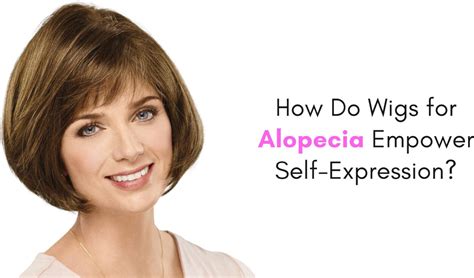Introduction

Alopecia, a condition causing partial or complete hair loss, can profoundly impact one’s self-image and well-being. Wigs have emerged as a transformative solution, offering discreet and customized hair restoration. This comprehensive guide will explore the intricacies of wigs for alopecia, empowering you to reclaim your confidence and embrace your unique identity.
Understanding Alopecia and Its Impact
Alopecia affects approximately 6.8 million people in the United States, with women accounting for roughly two-thirds of cases. The condition manifests in various forms, including:
- Alopecia Areata: Characterized by circular patches of hair loss
- Androgenic Alopecia: Gradual thinning and hair loss associated with aging and hormonal changes
- Totalis: Complete loss of hair on the scalp
- Universalis: Complete loss of all body hair
The physical and emotional toll of alopecia can be significant. Individuals may experience anxiety, depression, and impaired social interaction.
Wigs as a Powerful Coping Mechanism
Wigs offer a versatile solution for individuals with alopecia, providing:
- Restoration of hair: Wigs mimic the appearance and texture of natural hair, restoring lost volume and coverage.
- Privacy and discretion: Wigs conceal hair loss and allow individuals to manage their condition without judgment or stigma.
- Emotional support: Wearing a wig can boost confidence and self-esteem, empowering individuals to embrace their identity.
Types of Wigs for Alopecia
Numerous wig types are available to cater to the diverse needs of individuals with alopecia:
- Human Hair Wigs: Made from real human hair, these wigs offer the most realistic appearance and feel.
- Synthetic Hair Wigs: Crafted from synthetic fibers, these wigs are more affordable and require less maintenance.
- Lace Wigs: These wigs feature a delicate lace base that allows for seamless blending with natural skin tones, providing an undetectable look.
- Mono-Top Wigs: These wigs combine a monofilament top with synthetic or human hair, providing a natural appearance with optimal breathability.
Choosing the Right Wig: A Personalized Approach
Selecting the perfect wig requires careful consideration of several factors:
- Face shape: Analyze your face shape and choose a wig that complements your features.
- Skin tone: Match the wig color to your natural skin tone for an authentic look.
- Hair texture: Opt for a wig texture that resembles your own natural hair or a style you desire.
- Lifestyle: Consider your daily activities and select a wig that meets your lifestyle demands.
Wig Maintenance and Care
Proper wig care ensures longevity and optimal performance:
- Regular washing: Wash your wig every 6-8 wears using a mild shampoo and conditioner designed for wigs.
- Styling: Avoid using heat styling tools directly on the wig. Instead, opt for heat-resistant wigs or use a wig stand for styling.
- Storage: Store your wig in a cool, dry place when not in use. Use a wig stand or a satin bag for safekeeping.
Frequently Asked Questions about Alopecia Wigs
- Can I wear a wig with extreme hair loss? Yes, wigs are specifically designed for individuals with severe or total hair loss.
- Are wigs uncomfortable to wear? With advancements in wig technology, many wigs are lightweight, breathable, and designed for comfort.
- How long do wigs last? The lifespan of a wig depends on its type and maintenance. With proper care, wigs can last for several months to years.
Common Mistakes to Avoid
- Choosing the wrong wig size: Ensure the wig fits snugly but not too tightly, allowing for comfort and secure wear.
- Over-styling: Excessive styling can damage the wig and shorten its lifespan.
- Neglecting maintenance: Regular washing and proper storage are essential for preserving the wig’s quality and appearance.
Step-by-Step Approach to Wearing a Wig
- Prepare your scalp: Shave or trim any remaining hair to create a smooth base.
- Fit the wig: Place the wig on your head and adjust the straps for a secure fit.
- Secure the wig: Use a wig cap or double-sided tape to ensure the wig stays in place.
- Style the wig: Brush and style the wig as desired, using heat-resistant tools only on approved wigs.
- Maintain the wig: Follow the recommended care instructions for regular washing, styling, and storage.
Conclusion
Wigs for alopecia have become an indispensable tool for individuals seeking to restore their hair, regain their confidence, and embrace their unique identity. With a wide range of types and styles available, and with the right care and maintenance, wigs can empower individuals with alopecia to live life to the fullest. Remember, true beauty lies not in outward appearances but in the strength and resilience we embody.
